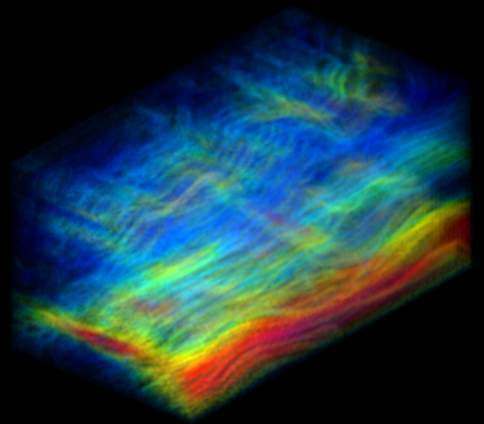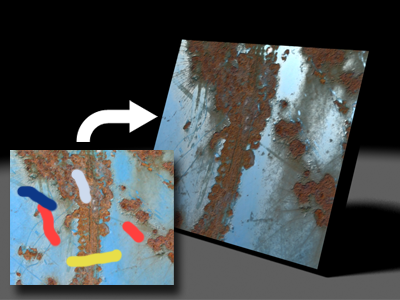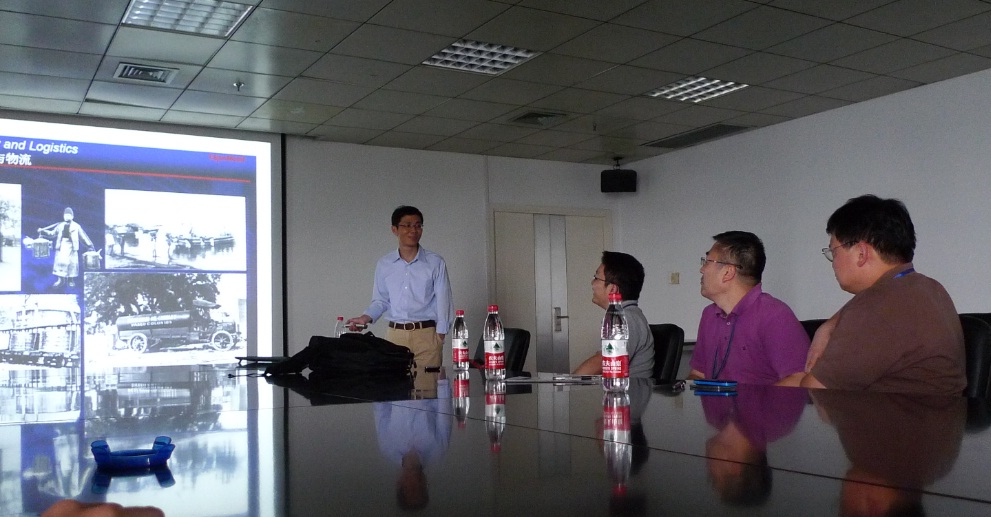可视化专家Kelly印象
这里说的是Kelly Gaither
(http://www.tacc.utexas.edu/about/staff-directory/staff-page/kelly-gaither/),德州奥斯汀分校高级计算中心(TACC)执行主任,是我合作过的唯一的女强人。
初识Kelly,是在2004年的IEEE Visualization大会。她是东道主,又是大会主席,自是左右逢源,风光无限。2006年,我到了Purdue,合作教授是David S. Ebert。听圈内华人说,David(IEEE TVCG前主编), Kelly和德国的Thomas Ertl(IEEE TVCG现主编)三人形成小山头。
一直无缘见到三人党的另外两人。2007年年底,我参与了David的一个流体可视化项目,和Yuyan Song在那个冬天访问了TACC。Kelly给人的感觉就是TACC的王熙凤,不见其人,远闻其声。见面握手寒暄片刻,她的大嘴冒出一句让我和Yuyan毛骨悚然的话:“那边两台Linux机器,已经给你们开好账户了,你们开始干活吧”!
原来女强人是这么指挥人工作的!可是,Kelly在David面前永远是小师妹的形态。她赞同David的所有观点,反过来对其他人总有不同意见。她的表扬和批评总是走向极端,因为形容词前总是轻易地配上Very very。不过,你不觉得她很直爽,很八卦,很亲切?
这种社交能力支撑她从密西西比州立大学走向TACC,从流体计算领域走向可视化领域的尖端。后来,她曾经一度消失不回信,原来以为她忙于其他事务,很久后才知道她父亲得了癌症。后来,我们和Kelly的合作其实不算成功,连续两次投稿都被某个对手给了零分。再后来,这个美国南方的女强人,2009年突然在我眼前的却是一个惊奇:她作为首席科学家获得了NSF的700万美元基金资助。
2011年年底,又听到Kelly的消息:她和Stony Brook的Klaus Mueller教授竞争IEEE VGTC(图形与可视化专委会)的主席。最终,是人脉广的Klaus当选。
我2004、2007年两度拜访德州奥斯丁。我不记得欣赏过举世闻名的黑人音乐,也没去过布什就任总统前的州长办公室。记忆中最深刻的却是临行前一夜和Yuyan在烤肉店吃的Smoked Pork. 这种烤肉的做法,大条、热情、浓郁,和Kelly的性格有些相像呢。
附:
AUSTIN, Texas- The National Science Foundation (NSF) has awarded a $7million grant to the Texas Advanced Computing Center (TACC) at The
University of Texas at Austin for a three-year project that will provide a new compute resource and the largest, most comprehensive suite of
visualization and data analysis (VDA) services to the open sciencecommunity.
The new compute resource, “Longhorn,” will provide unprecedented VDA capabilities and will enable the national and international science
communities to interactively visualize and analyze datasets of near petabyte scale (a quadrillion bytes or 1,000 terabytes) for scientists to explore, gain insight and develop new knowledge.
According to Kelly Gaither, principal investigator and director of data & information analysis at TACC, the sudden onset of the widespread adoption of high performance computing (HPC) enabled by commodity clusters, and the scaling of systems to hundreds of teraflops and beyond made it urgent to ensure that this data deluge did not cause a bottleneck for visualization of very large datasets.
“The capabilities of VDA resources have not kept pace with the explosive rate of data production leading to a critical juncture in computational science,” Gaither says. “Interactive visualization, data analysis and timely data assimilation are necessary for exploring important and challenging problems throughout science, engineering, medicine, national security and safety, to name a few important areas.”
Alan Blatecky, acting deputy director of NSF’s Office of Cyberinfrastructure (OCI), said the importance of providing significant
funding for this effort at this point in time is immeasurable.
“Science is being driven and defined by data,” he said, “and our ability to manage, manipulate, mine and visualize the results is fundamental to the discovery process.”
“These eXtremeDigital program awards meet the end-to-end needs of the user science community spot on,” said Barry Schneider, OCI program director.
“They will enable visualizing the results from complex numerical simulations and experiments in real time.”
“TACC and the NSF have demonstrated that it’s possible to make long-term strategic investments in HPC technology, even during a challenging economic period,” said John Mullen, vice president of Dell Education, State and Local Government. “Thanks to that investment, Longhorn will allow scientists to tackle complex challenges with new advancements in CPU, GPU and networking technologies through an industry-standard HPC stack.” Jeff Brown, general manager, NVIDIA Professional Solutions, said, “TACC’s unprecedented system, based on the NVIDIA Quadro Plex solution, exemplifies the continuing and necessary shift to using the graphics processing unit to help solve the world’s most demanding visual computing challenges. The utilization of NVIDIA processors, and the ability to access this massively parallel processing power in an open environment, can radically improve how scientists, researchers and engineers will do their jobs.”
Along with TACC, four of the leading VDA groups across the nation will provide leadership in offering advanced services to the national open
science community: the Scientific Computing and Imaging Institute at the University of Utah, the Purdue Visual Analytics Center, the Data Analysis Services Group at the National Center for Atmospheric Research and the University of California Davis. The Southeastern Universities Research Association will ensure that the VDA training is delivered to underrepresented communities focusing on minority-serving institutions.
Said Gaither, “The team has world-class expertise conducting VDA research and development, provisioning large-scale systems, providing user support, and training and educating current and future scientists. The team also has vast experience providing VDA tools to the user communities of the National Science Foundation, Department of Homeland Security, Department of Energy and the National Institutes of Health.”
The project will provide the framework for leading researchers to collaborate and analyze their terascale datasets while still offering low
barriers to entry and usability. The grant will stimulate and support new VDA research and technology transfer throughout the scientific research community.
“TACC and its partners will enable the analysis of data at the largest scales and will bring desktop capabilities to the user via a remote
resource,” Gaither said. “We’re excited to be able to conduct extensive training in the use of VDA techniques and the deployment of next generation systems to overcome the current scarcity of such expertise and resources on campuses around the country.”
Longhorn and its related services will be running by <http://sc09.supercomputing.org/> Supercomputing 2009 which takes place in
Portland, Ore. The system is scheduled to enter full production on Jan. 4, 2010. The grant expires in July 2012.
This award is funded under the American Recovery and Reinvestment Act of 2009 (ARRA) (Public Law 111-5) and is subject to the ARRA Terms and Conditions, dated May 2009, available on the NSF Web site at:
http://www.nsf.gov/publications/pub_summ.jsp?ods_key=arra0509


